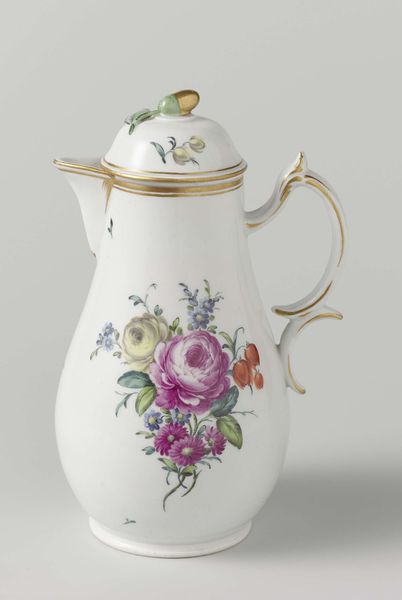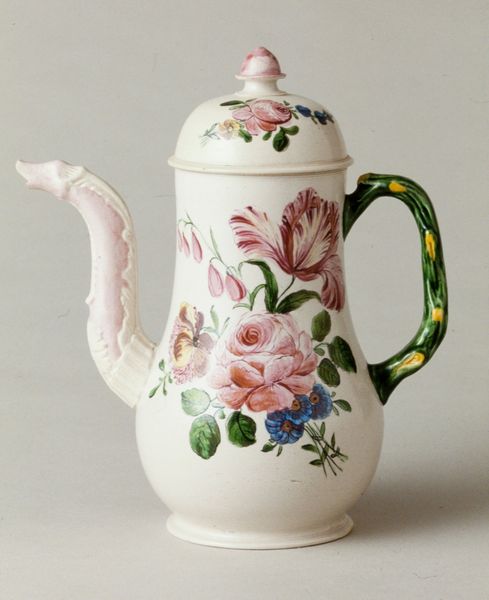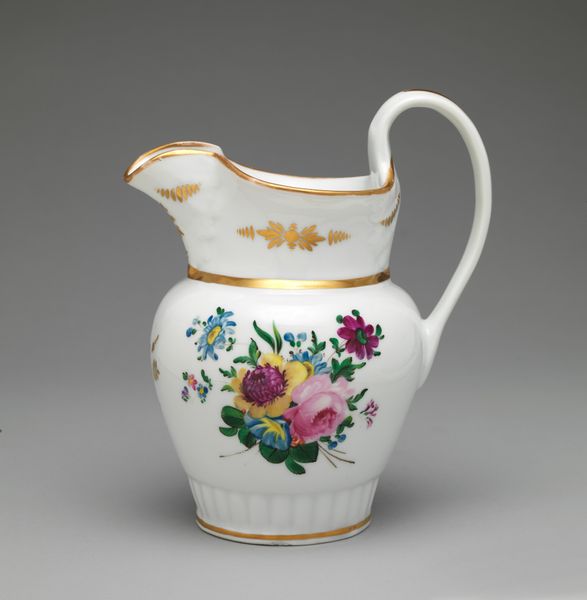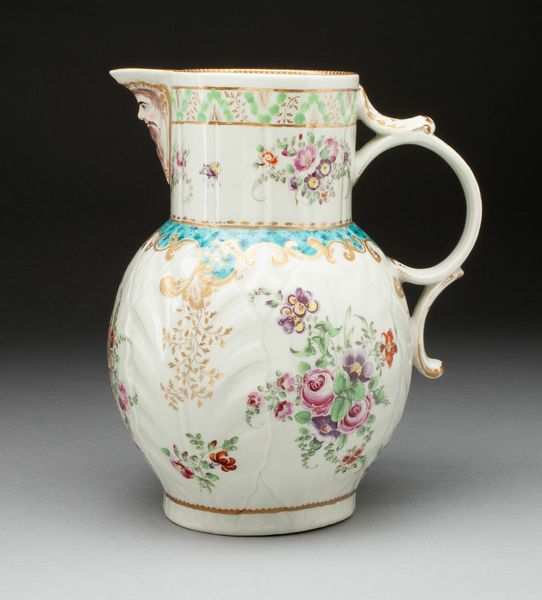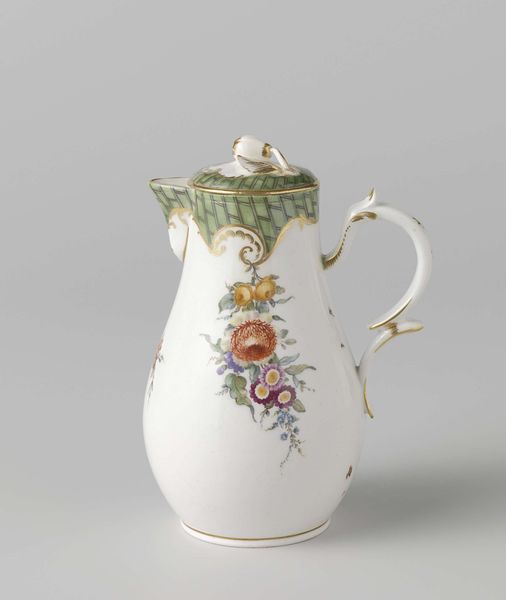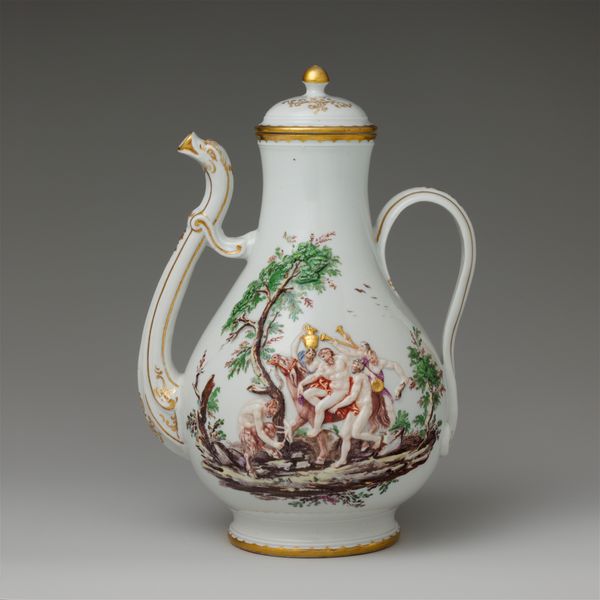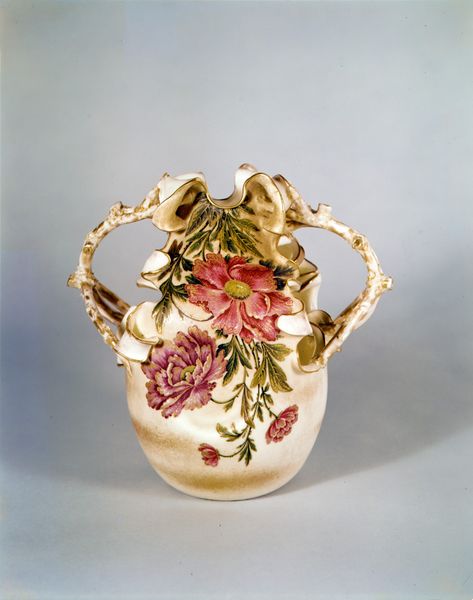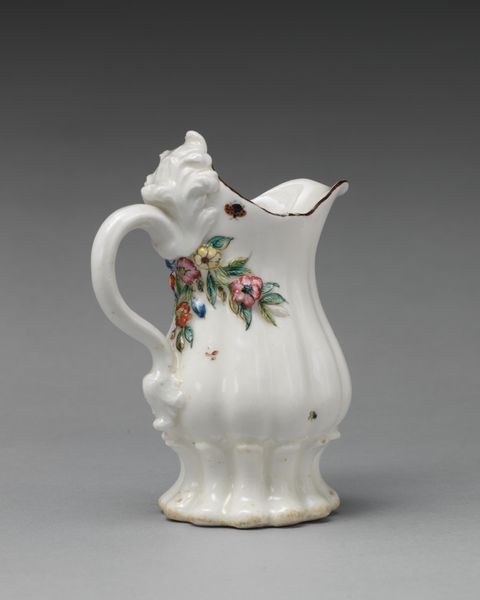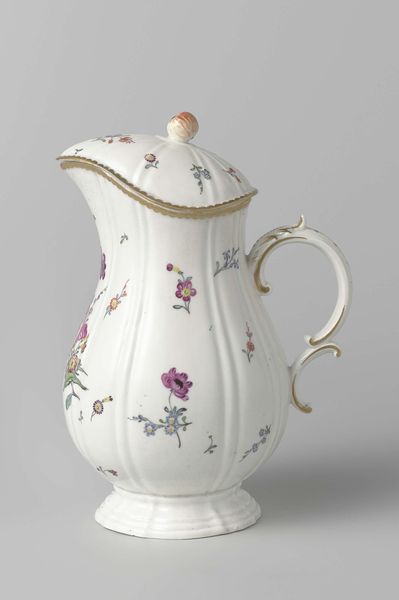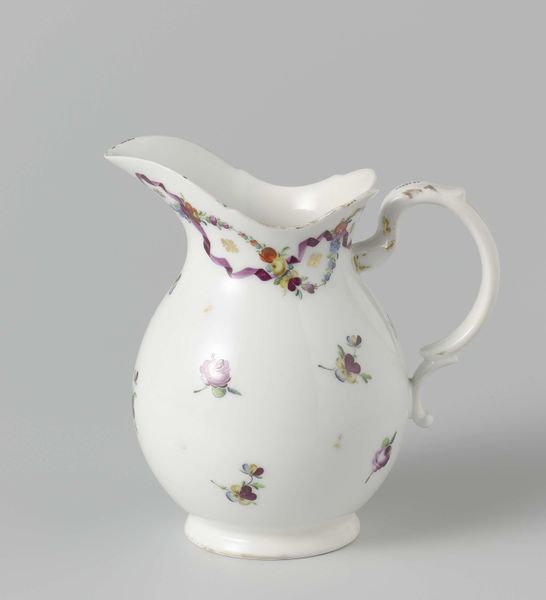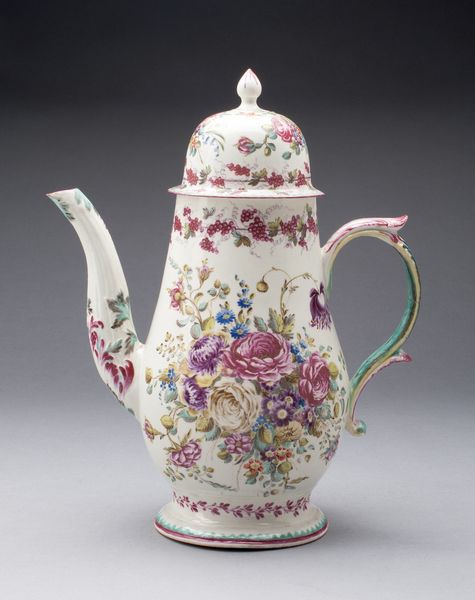
Dimensions: Height: 5 1/4 in. (13.3 cm)
Copyright: Public Domain
Curator: The Metropolitan Museum houses this delightful Rococo-style milk jug, crafted by the Ludwigsburg Porcelain Manufactory between 1770 and 1775. Editor: It’s so dainty! The whole piece seems to float; even the floral painting has this light, airy quality about it. You can tell immediately it was designed for aristocratic indulgence. Curator: The jug's very form suggests a world of symbolism. Milk, of course, speaks to nourishment and the maternal, but then these profuse blooms indicate fertility, abundance, and ephemeral beauty. What messages do you suppose this domestic item would have conveyed? Editor: Consider the labour and the highly specialised skillset that this required; a whole team of artisans collaborating and perfecting each jug. Think about the consumption as well: these jugs existed to enable access to luxuries from across Europe. Porcelain wasn't just a fancy material, it was the result of trade and access. Curator: Indeed. The hard-paste porcelain itself – often called ‘white gold’ – carries its own history of trade and imitation, mirroring the intense fascination with Chinoiserie motifs, too. Each painted flower might have held meaning, perhaps accessible through the language of flowers—a subtle game of symbols understood by the jug’s owner and her social circle. Editor: But beyond the flowers, the structure itself signifies so much. Notice how the jug balances function with ornamentation? How the material dictates the shape, as porcelain requires certain forms to maintain integrity during the firing process? It reminds us of the physical and social constraints of artistic production. Curator: Absolutely. It really is a fascinating item for the home. This piece invites a deeper understanding of the visual codes employed in domestic life, whispering stories about eighteenth-century Europe. Editor: A lovely piece. From raw clay to final flourish, you're forced to consider not just its form, but the context it both reflects and perpetuates.
Comments
No comments
Be the first to comment and join the conversation on the ultimate creative platform.
